DISCLAIMER: I'm no astronomer, and I get confused by simple objects like magnets, so this is just a layman's dip into some sources. And then some conjecture 
EDIT: Skip to the bottom for some great Cmdr posts about in-game metrics which may mark tenuous planets already, as opposed to my 'sci definition' approach taken here
Premise:
The only confirmed atmospheric planets in Odyssey are planets with "tenuous atmospheres":
Defining Tenuous Atmospheres:
Here's one definition:
The above source claims tenuous atmospheres can also be defined as exospheres. Here's a definition for exospheres:
Tenuous Atmospheres in our Solar System:
They seem fairly common in Sol:
Other sources come up with similar lists:
There's some debate about whether Mars fits into the category, but it's terraformed in Elite, so it's academic as far as Sol goes . It would bring more gameplay potential however (winds, dust storms etc). The trailer's use of sky colouration is perhaps suggestive that FDev's definition of 'tenuous' could extend that far.
. It would bring more gameplay potential however (winds, dust storms etc). The trailer's use of sky colouration is perhaps suggestive that FDev's definition of 'tenuous' could extend that far.
(For the purposes of Sol, the Moon is also permit locked already due to high population, so seems liable to remain that way).
The Nature of Those Atmospheres & Their Local Environments in Sol:
Currently Inaccessible Planets & Moons [1 planet, 1 moon]:
NB: I've tried to guess how likely they are to be unlocked in Odyssey, based on features announced to date.
Io:
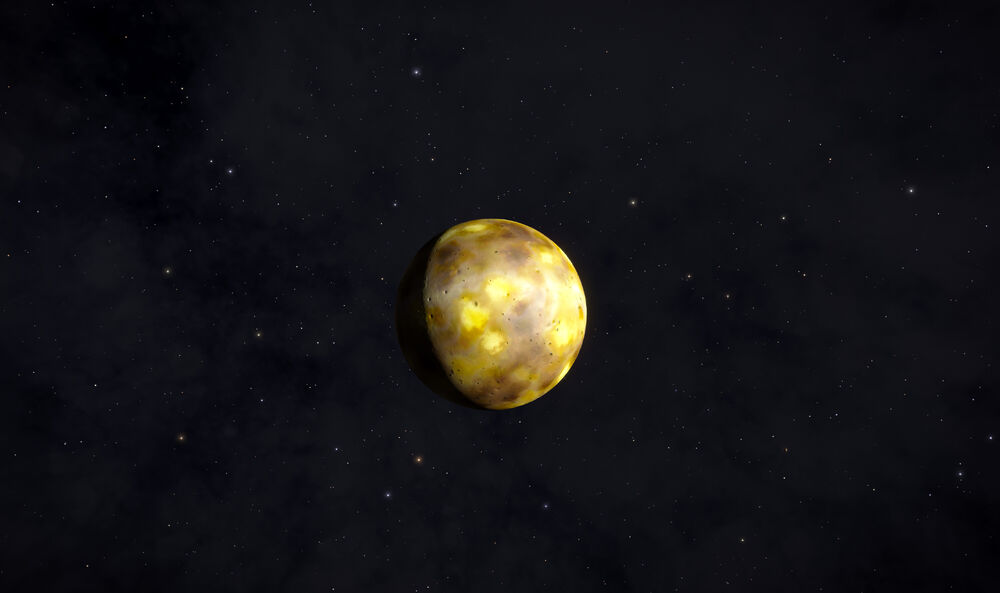
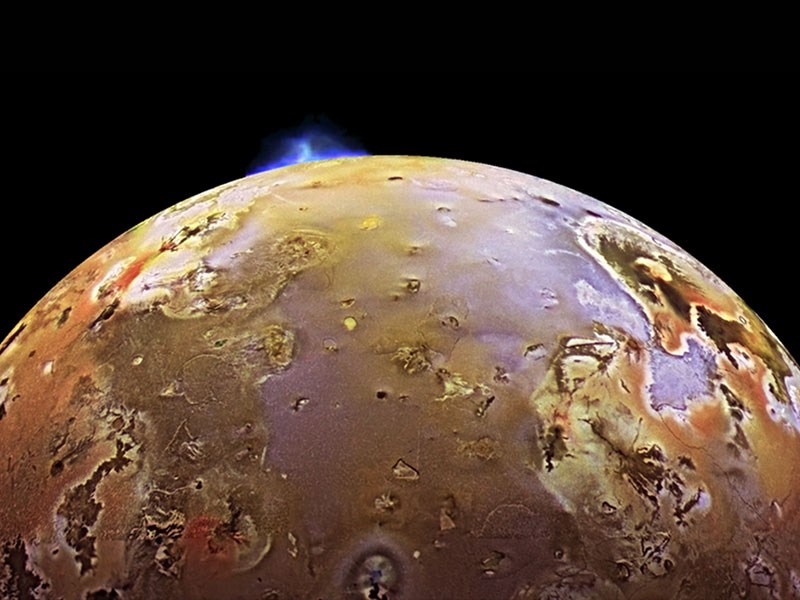
En route to the icy worlds inhabiting the outer regions of our solar system, NASA’s New Horizons spacecraft zipped past Jupiter, catching Io, the planet’s third-largest moon, enduring a volcanic explosion. Image Credit: NASA's Goddard Space Flight Center Cover image courtesy of NASA/JPL/University of Arizona
Likelihood of Odyssey access:
Low. Would require the addition of 'Major Rocky Magma' etc. No mention of vulcanism additions as yet.
Pluto:
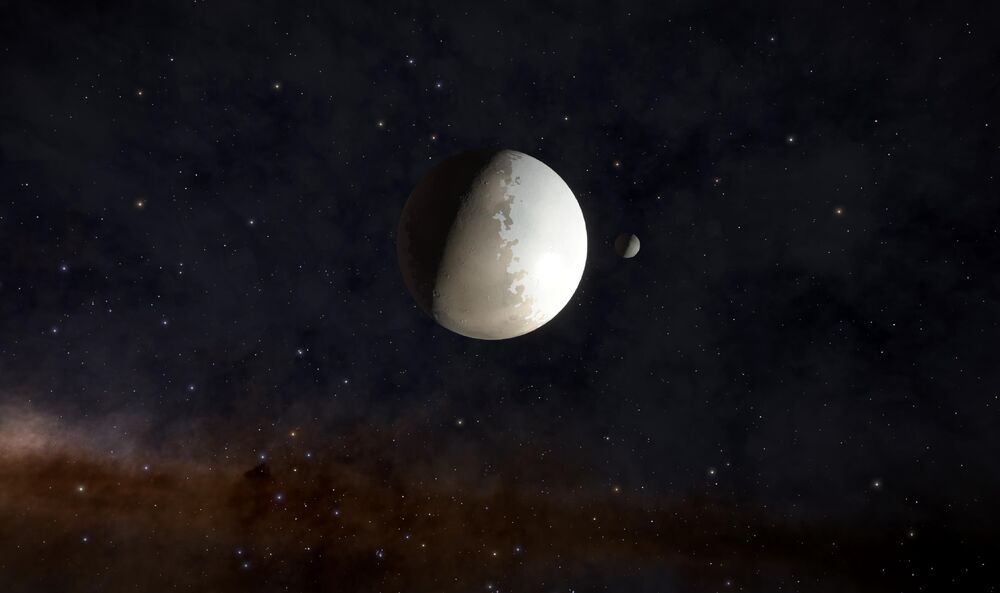
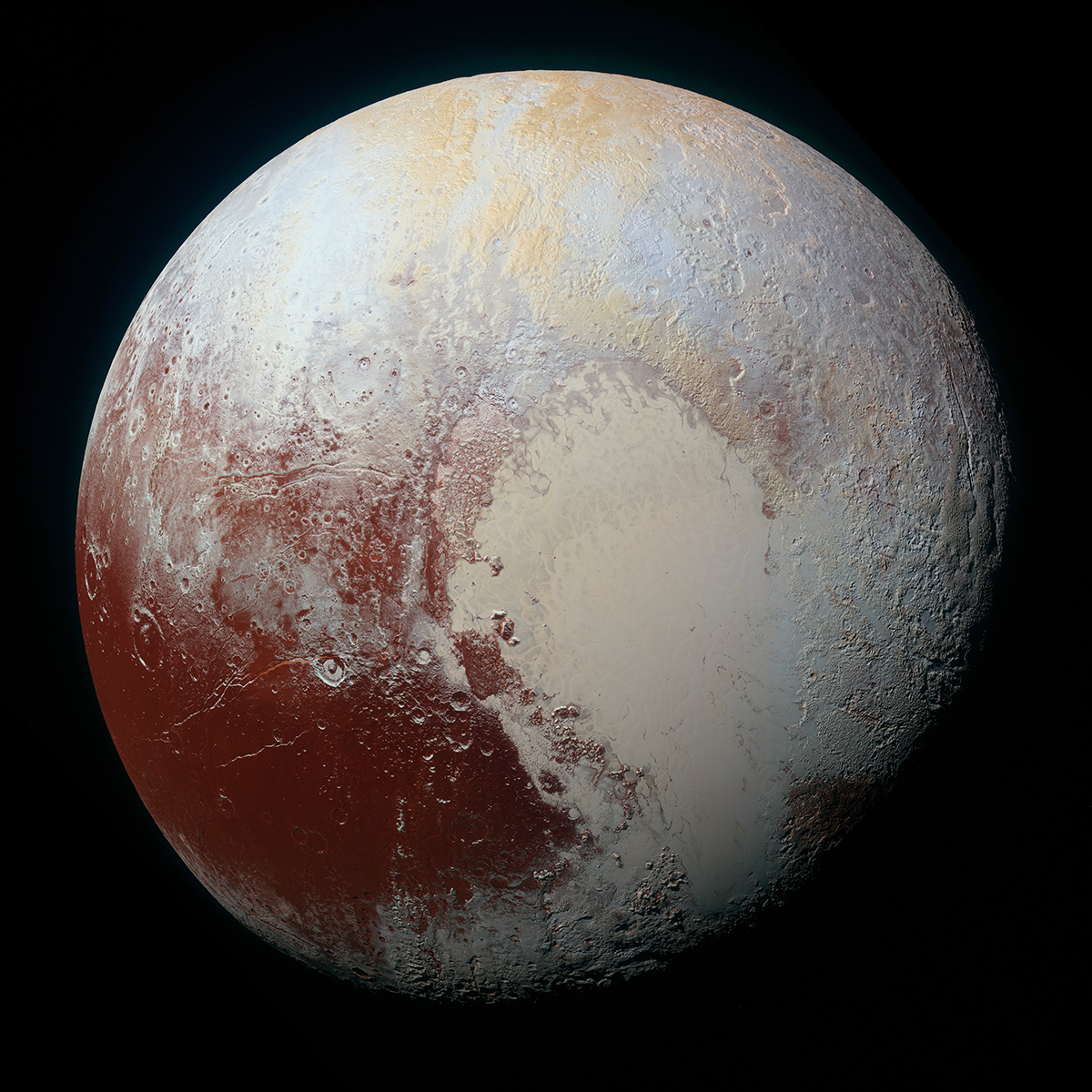
New Horizons spacecraft captured this high-resolution enhanced color view of Pluto on July 14, 2015.
Likelihood of Odyssey access:
Good.
Possible in-game modelling or gameplay impact?:
Currently Accessible Planets & Moons [1 planet, 5 moons]:
NB: I've tried to guess at whether they might change in any way,
Mercury:
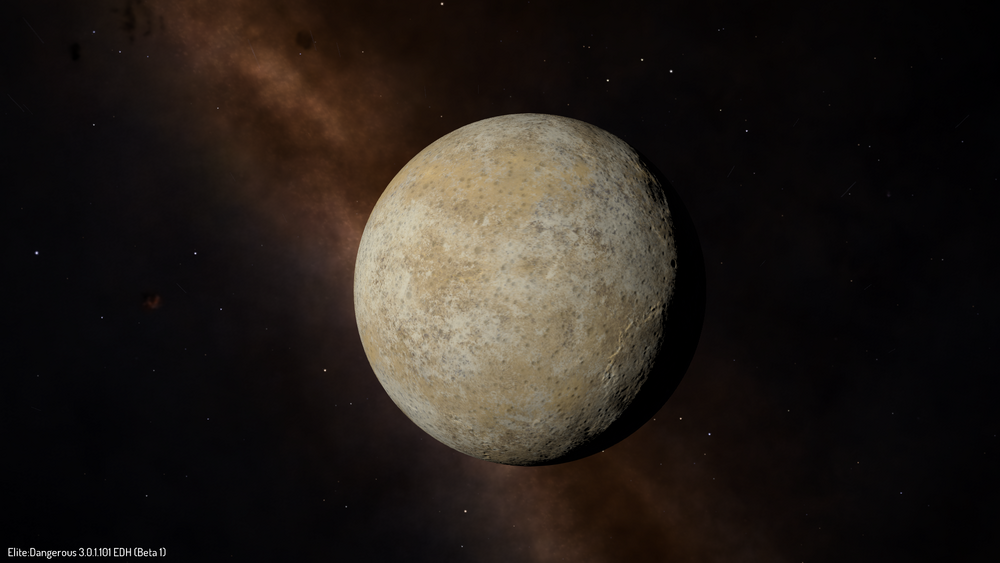

Sodium tail of Mercury during the MESSENGER's first flyby on January 14, 2008
Possible in-game modelling or gameplay impact?:
Ganymede:
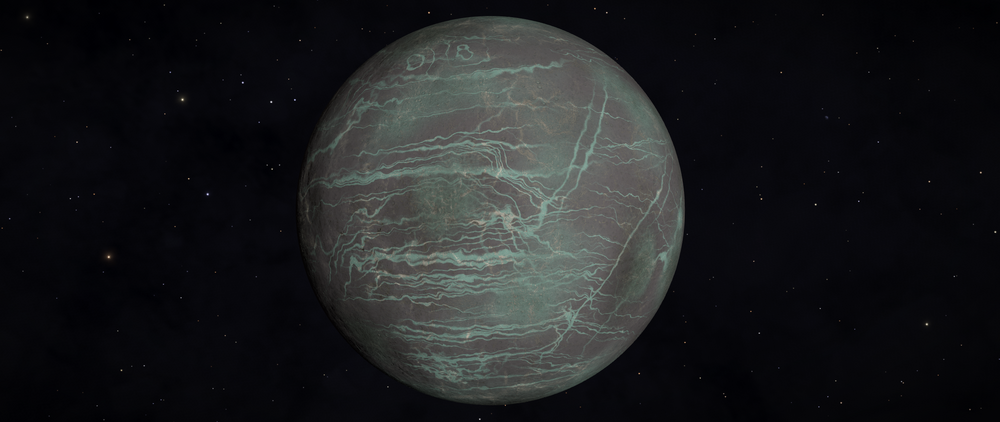

Natural color view of Ganymede from the Galileo spacecraft during its first encounter with the satellite. North is to the top of the picture and the sun illuminates the surface from the right. The dark areas are the older, more heavily cratered regions and the light areas are younger, tectonically deformed regions. Image Credit: NASA/JPL
Possible in-game modelling or gameplay impact?:
Europa:
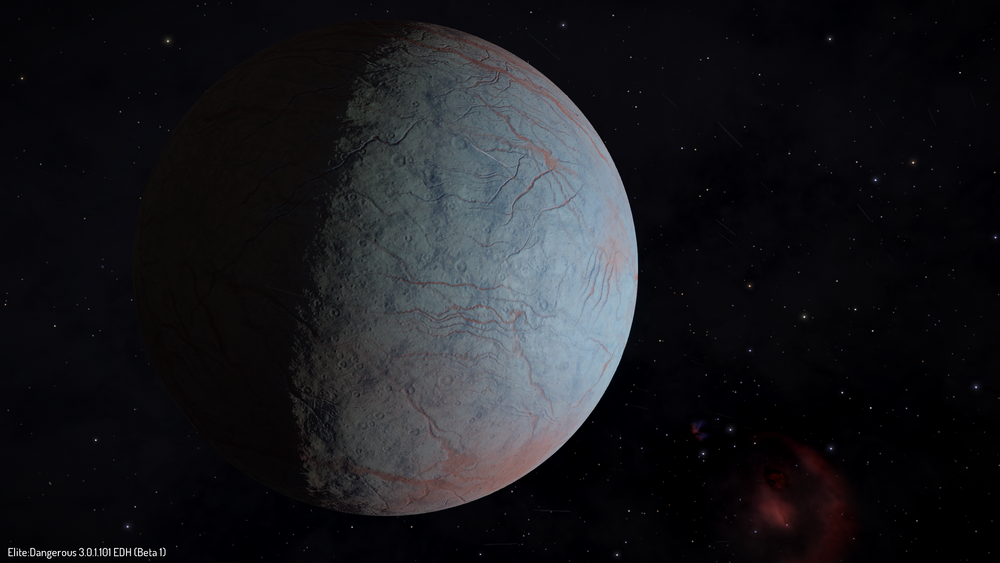
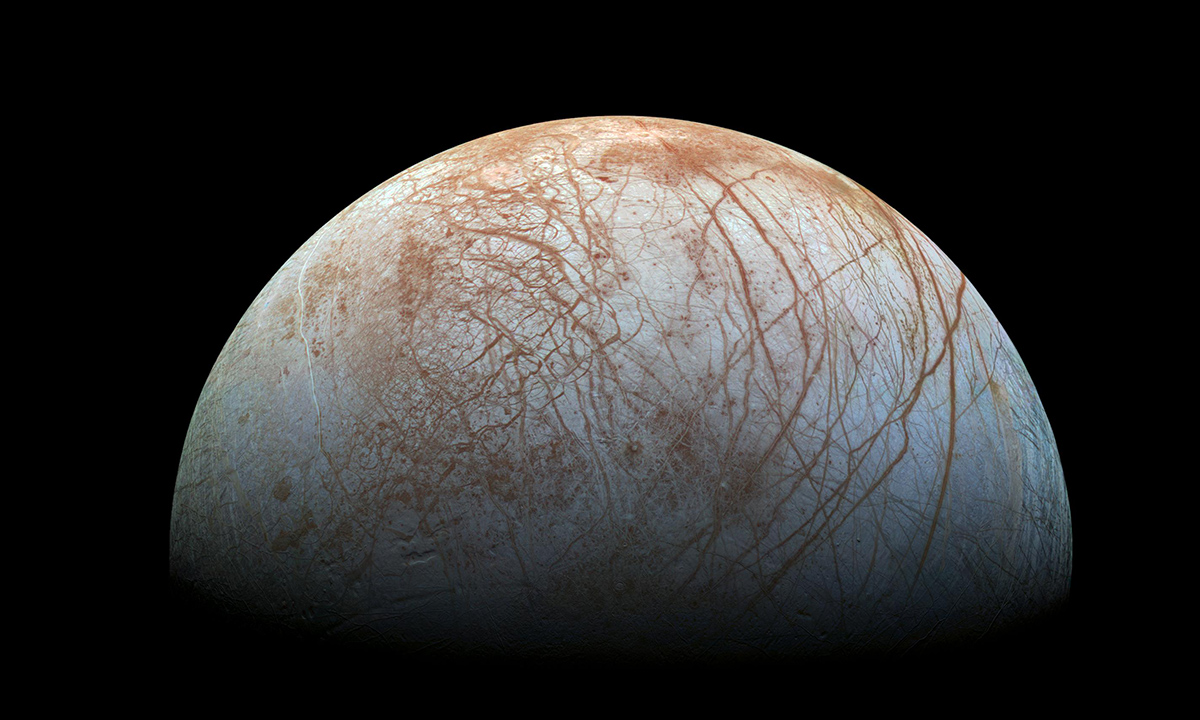
To create this new version, the images were assembled into a realistic color view of the surface that approximates how Europa would appear to the human eye. - NASA/JPL-Caltech/SETI Institute
Possible in-game modelling or gameplay impact?:
Callisto:
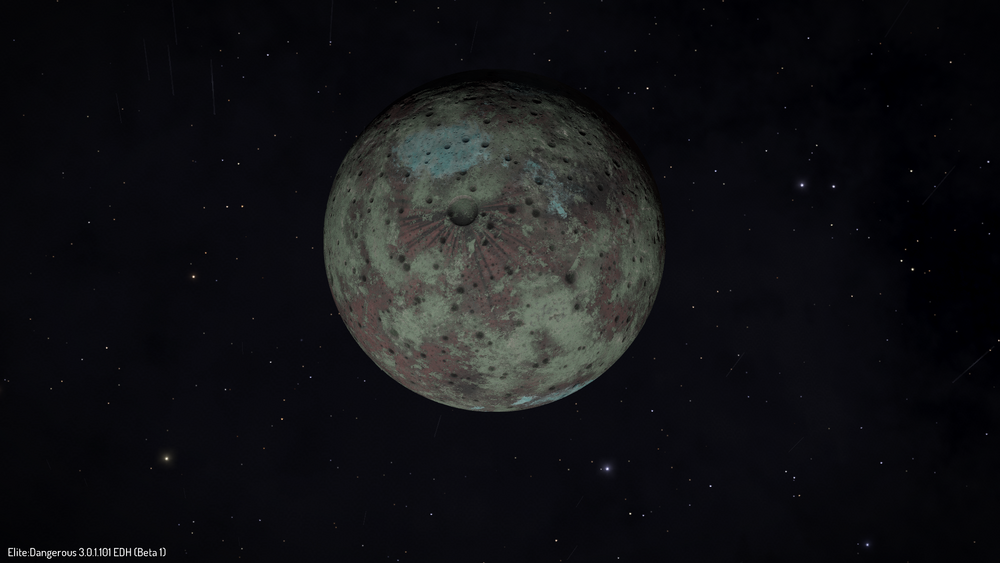
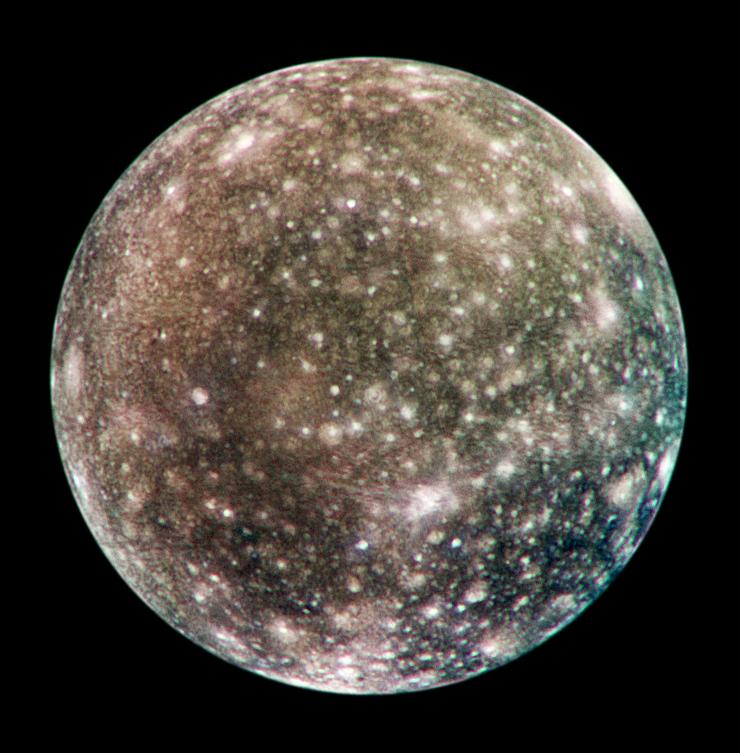
Scientists believe the brighter areas are mainly ice and the darker areas are highly eroded, ice-poor material.
Possible in-game modelling or gameplay impact?:
Enceladus:
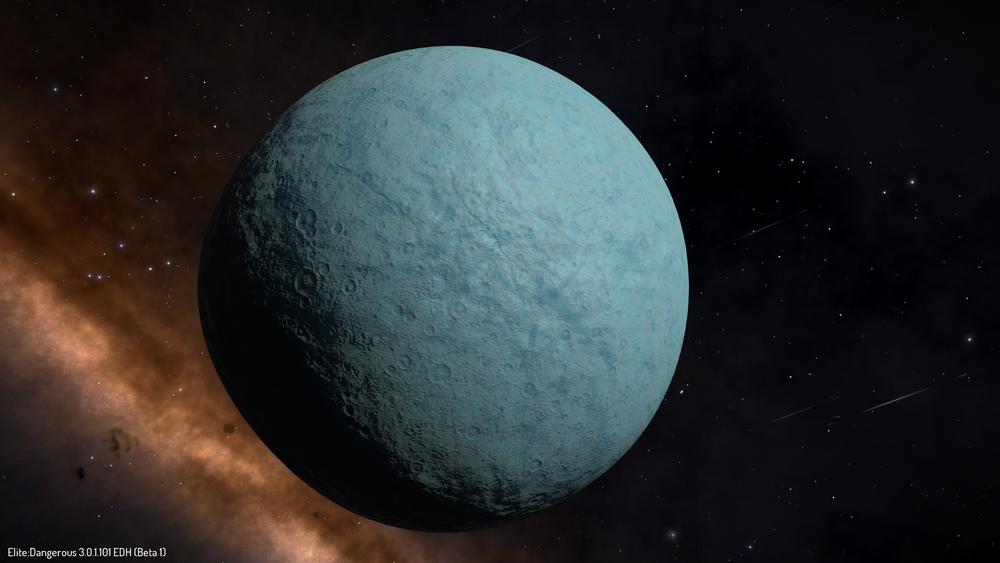

NASA’s Cassini spacecraft captured this image of Enceladus on Nov. 30, 2010. The shadow of the body of Enceladus on the lower portions of the jets is clearly visible. Image Credit: NASA/JPL-Caltech/Space Science Institute
Possible in-game modelling or gameplay impact?:
Triton:
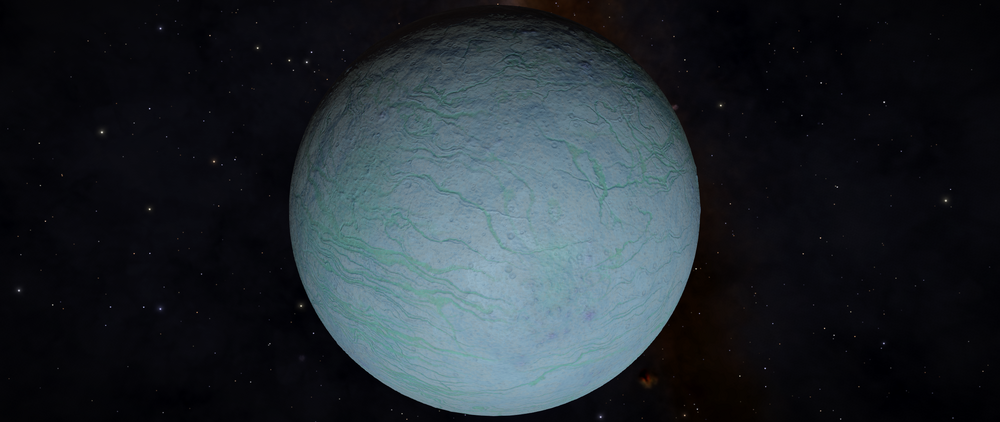
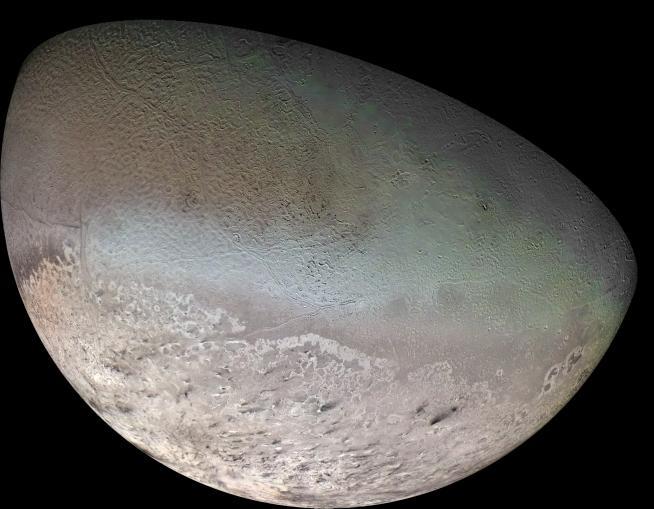
Global color mosaic of Triton, taken in 1989 by Voyager 2 during its flyby of the Neptune system. Image Credit: NASA/JPL/USGS
Possible in-game modelling or gameplay impact?:
---
'Easy' Additions That FDev Might Include:
Difficult Additions (That Haven't Been Mentioned by FDev, So Best To Presume Not In For Now):
—
EDIT: Some existing in-game metrics for tenuous atmospheres:
Bizarrely the thin category seems to range as high as thousands of atmospheres, if mainly for simple nitrogen or ammonia atmospheres it appears.
EDIT2: Not the case in current build
So at first glance it appears that FDev have their own metric for 'tenuous' atmospheres already, which leans towards thicker atmospheres than the scientific definition.
EDIT: Skip to the bottom for some great Cmdr posts about in-game metrics which may mark tenuous planets already, as opposed to my 'sci definition' approach taken here
Premise:
The only confirmed atmospheric planets in Odyssey are planets with "tenuous atmospheres":
...you’ll be able to access a whole pile of new planets, the ones with tenuous atmospheres.
Defining Tenuous Atmospheres:
Here's one definition:
characterized by a collisionless gas with exobase at the surface.
The above source claims tenuous atmospheres can also be defined as exospheres. Here's a definition for exospheres:
an atmosphere so thin that its few atoms or molecules are unlikely to collide with one another
Tenuous Atmospheres in our Solar System:
They seem fairly common in Sol:
Mercury and the Moon, the Galilean satellites [Ganymede, Europa, Callisto, Io], the small satellite of Saturn Enceladus, the dwarf planet Pluto, and Neptune’s satellite Triton.
Other sources come up with similar lists:
Mercury, the Moon, Io, Europa, Ganymede, Callisto, Enceladus, Triton, Pluto
There's some debate about whether Mars fits into the category, but it's terraformed in Elite, so it's academic as far as Sol goes
(For the purposes of Sol, the Moon is also permit locked already due to high population, so seems liable to remain that way).
The Nature of Those Atmospheres & Their Local Environments in Sol:
[Tenuous atmospheres] are produced by a wide variety of physical processes, including sublimation, sputtering (by both photons and charged particles), micrometeroid bombardment, geyers and volcanoes.(source)
Currently Inaccessible Planets & Moons [1 planet, 1 moon]:
NB: I've tried to guess how likely they are to be unlocked in Odyssey, based on features announced to date.
Io:


En route to the icy worlds inhabiting the outer regions of our solar system, NASA’s New Horizons spacecraft zipped past Jupiter, catching Io, the planet’s third-largest moon, enduring a volcanic explosion. Image Credit: NASA's Goddard Space Flight Center Cover image courtesy of NASA/JPL/University of Arizona
Atmospheric Conditions:
Geology, Chemistry & Potential Biology:
Sulfur dioxide is the primary constituent of a thin atmosphere on Io. It has no water to speak of, unlike the other, colder Galilean moons. (source)
Geology, Chemistry & Potential Biology:
The most volcanically active world in the solar system, with hundreds of volcanoes, some erupting lava fountains dozens of miles (or kilometers) high
---
The tidal forces generate a tremendous amount of heat within Io, keeping much of its subsurface crust in liquid form seeking any available escape route to the surface to relieve the pressure. Thus, the surface of Io is constantly renewing itself, filling in any impact craters with molten lava lakes and spreading smooth new floodplains of liquid rock. The composition of this material is not yet entirely clear, but theories suggest that it is largely molten sulfur and its compounds (which would account for the varied coloring) or silicate rock (which would better account for the apparent temperatures, which may be too hot to be sulfur).
---
Constant volcanism and intense radiation make Io an unlikely destination for life. (source)
Likelihood of Odyssey access:
Low. Would require the addition of 'Major Rocky Magma' etc. No mention of vulcanism additions as yet.
Pluto:


New Horizons spacecraft captured this high-resolution enhanced color view of Pluto on July 14, 2015.
Atmospheric Conditions:
Geology, Chemistry & Potential Biology:
Pluto has a thin, tenuous atmosphere that expands when it comes closer to the sun and collapses as it moves farther away—similar to a comet. The main constituent is molecular nitrogen, though molecules of methane and carbon monoxide have also been detected.
When Pluto is close to the sun, its surface ices sublimate (changing directly from solid to gas) and rise to temporarily form a thin atmosphere. Pluto's low gravity (about six percent of Earth's) causes the atmosphere to be much more extended in altitude than our planet's atmosphere. Pluto becomes much colder during the part of each year when it is traveling far away from the sun. During this time, the bulk of the planet's atmosphere may freeze and fall as snow to the surface. (source)
Geology, Chemistry & Potential Biology:
Probably has a rocky core surrounded by a mantle of water ice. Interesting ices like methane and nitrogen frost coat its surface. (source)
Likelihood of Odyssey access:
Good.
Possible in-game modelling or gameplay impact?:
- I'd be surprised to see Seasonal changes (with the atmosphere freezing to snow when far from the sun). The addition of a permanent tenuous atmosphere seems more likely.
- Ice improvements
Currently Accessible Planets & Moons [1 planet, 5 moons]:
NB: I've tried to guess at whether they might change in any way,
Mercury:


Sodium tail of Mercury during the MESSENGER's first flyby on January 14, 2008
Atmospheric Conditions:
---
Possible in-game modelling or gameplay impact?:
Close to zero I'd think. Possibly factored into surface chemical distribution?
Geology, Chemistry & Potential Biology:
With virtually no atmosphere, Mercury feels very little in terms of traditional weather. It does feel the presence of solar weather, with the constant ebb and flow of the solar wind bombarding its surface.(source)
Temperatures on the surface of Mercury are extreme, both hot and cold. During the day, temperatures on Mercury's surface can reach 800 degrees Fahrenheit (430 degrees Celsius). Because the planet has no atmosphere to retain that heat, nighttime temperatures on the surface can drop to minus 290 degrees Fahrenheit (minus 180 degrees Celsius). (source)
(source)
Atmosphere of Mercury[1] Species CD,[n 1] cm−2 SD,[n 2] cm−3 Hydrogen (H) ~ 3 × 109 ~ 250 Molecular hydrogen < 3 × 1015 < 1.4 × 107 Helium < 3 × 1011 ~ 6 × 103 Atomic oxygen < 3 × 1011 ~ 4 × 104 Molecular oxygen < 9 × 1014 < 2.5 × 107 Sodium ~ 2 × 1011 1.7–3.8 × 104 Potassium ~ 2 × 109 ~ 4000 Calcium ~ 1.1 × 108 ~ 3000 Magnesium ~ 4 × 1010 ~ 7.5 × 103 Argon ~ 1.3 × 109 < 6.6 × 106 Water < 1 × 1012 < 1.5 × 107 neon, silicon, sulfur, iron,
carbon dioxide, etc.
---
During its second flyby of the planet on October 6, 2008, MESSENGER discovered that Mercury’s magnetic field can be extremely leaky indeed. The spacecraft encountered magnetic "tornadoes" – twisted bundles of magnetic fields connecting the planetary magnetic field to interplanetary space – that were up to 500 miles wide or a third of the radius of the planet.
"These 'tornadoes' form when magnetic fields carried by the solar wind connect to Mercury's magnetic field," said Slavin. "As the solar wind blows past Mercury's field, these joined magnetic fields are carried with it and twist up into vortex-like structures. These twisted magnetic flux tubes, technically known as flux transfer events, form open windows in the planet's magnetic shield through which the solar wind may enter and directly impact Mercury's surface." (source)
Possible in-game modelling or gameplay impact?:
Close to zero I'd think. Possibly factored into surface chemical distribution?
Geology, Chemistry & Potential Biology:
While there are large areas of smooth terrain, there are also cliffs, some hundreds of miles long and soaring up to a mile high. They rose as the planet's interior cooled and contracted over the billions of years since Mercury formed.
---
Mercury may have water ice at its north and south poles inside deep craters, but only in regions of permanent shadow. There it could be cold enough to preserve water ice despite the high temperatures on sunlit parts of the planet.
---
Mercury's environment is not conducive to life as we know it. The temperatures and solar radiation that characterize this planet are most likely too extreme for organisms to adapt to.(source)
Possible in-game modelling or gameplay impact?:
- Temperature extremes for on foot gameplay?
Ganymede:


Natural color view of Ganymede from the Galileo spacecraft during its first encounter with the satellite. North is to the top of the picture and the sun illuminates the surface from the right. The dark areas are the older, more heavily cratered regions and the light areas are younger, tectonically deformed regions. Image Credit: NASA/JPL
Atmospheric Conditions:
Geology, Chemistry & Potential Biology:
The atmosphere is far too thin to support life as we know it.
---
Ganymede is the largest moon in our solar system and the only moon with its own magnetic field. The magnetic field causes aurora. (source)
Inferred O2 vertical column densities are in the range (1-10) × 1014 cm-2 for Ganymede
---
The observed double-peaked profile of Ganymede's O I 1356 Å feature indicates a nonuniform spatial emission distribution that suggests two distinct and spatially-confined emission regions, consistent with the satellite's north and south poles. (source)
Geology, Chemistry & Potential Biology:
Ganymede has large, bright regions of ridges and grooves that slice across older, darker terrains. These grooved regions are a clue that the moon experienced dramatic upheavals in the distant past. Scientists have also found strong evidence of an underground ocean on Ganymede.
---
This grooved terrain is probably formed by tensional faulting or the release of water from beneath the surface.
---
Ganymede has three main layers. A sphere of metallic iron at the center (the core, which generates a magnetic field), a spherical shell of rock (mantle) surrounding the core, and a spherical shell of mostly ice surrounding the rock shell and the core. The ice shell on the outside is very thick, maybe 800 km (497 miles) thick. The surface is the very top of the ice shell. Though it is mostly ice, the ice shell might contain some rock mixed in. Scientists believe there must be a fair amount of rock in the ice near the surface. (source)
Possible in-game modelling or gameplay impact?:
- Auroras? For the pretty?
- (Surface water modelling seems unlikely).
Europa:


To create this new version, the images were assembled into a realistic color view of the surface that approximates how Europa would appear to the human eye. - NASA/JPL-Caltech/SETI Institute
Atmospheric Conditions:
Geology, Chemistry & Potential Biology:
Europa has only a tenuous atmosphere of oxygen.
---
More recent observations from telescopes such as Hubble Space Telescope, as well as a reanalysis of some data from the Galileo spacecraft, have suggested that it is possible that thin plumes of water are being ejected 100 miles (160 kilometers) above Europa’s surface. In November 2019, an international research team led by NASA announced they had directly detected water vapor for the first time above Europa’s surface. (source)
Geology, Chemistry & Potential Biology:
Scientists think Europa’s ice shell is 10 to 15 miles (15 to 25 kilometers) thick, floating on an ocean 40 to 100 miles (60 to 150 kilometers) deep.
---
Europa’s water-ice surface is crisscrossed by long, linear fractures. Based on the small number of observable craters, the surface of this moon appears to be no more than 40 to 90 million years old, which is youthful in geologic terms (the surface of Callisto, another of Jupiter’s moons, is estimated to be a few billion years old). Along Europa's many fractures, and in splotchy patterns across its surface, is a reddish-brown material whose composition is not known for certain, but likely contains salts and sulfur compounds that have been mixed with the water ice and modified by radiation.
---
Europa’s vast and unfathomably deep ocean is widely considered the most promising place to look for life beyond Earth. (source)
---
Flexing from the tides likely creates the moon’s surface fractures. If Europa's ocean exists, the tidal heating could also lead to volcanic or hydrothermal activity on the seafloor, supplying nutrients that could make the ocean suitable for living things.
Possible in-game modelling or gameplay impact?:
- Expanded fumerole effects?
- Ice improvements
- (Super rare alien life due to potential oceanic life?)
Callisto:


Scientists believe the brighter areas are mainly ice and the darker areas are highly eroded, ice-poor material.
Atmospheric Conditions:
Geology, Chemistry & Potential Biology:
Scientists announced in 1999 that the Galileo spacecraft detected a very thin carbon dioxide exosphere—an extremely thin atmosphere—on Callisto during its observations in 1997. More recent research indicates Callisto also has oxygen and hydrogen in its exosphere. (source)
Geology, Chemistry & Potential Biology:
Callisto has an icy surface covered by craters of various shapes and sizes, including bowl-shaped craters and craters with multiple rings. Data gathered by the Galileo spacecraft indicate Callisto may have a subsurface ocean and scientists estimate it may be 155 miles (250 kilometers) below the surface. More recent research reveals that this ocean may be located deeper beneath the surface than previously thought, or may not exist at all. If there is an ocean, it may be interacting with rocks, giving Callisto a chance of supporting life. Callisto’s interior may have layers of ice mixed with rock and metal, possibly extending to its center.
---
Callisto’s rocky, icy surface is the oldest and most heavily cratered in our solar system. The surface is about 4 billion years old and it’s been pummeled, likely by comets and asteroids. Because the impact craters are still visible, scientists think the moon has little geologic activity—there are no active volcanoes or tectonic shifting to erode the craters. Callisto looks like it’s sprinkled with bright white dots that scientists think are the peaks of the craters capped with water ice. (source)
Possible in-game modelling or gameplay impact?:
- Ice improvements
- (Super rare alien life due to potential oceanic life?)
Enceladus:

NASA’s Cassini spacecraft captured this image of Enceladus on Nov. 30, 2010. The shadow of the body of Enceladus on the lower portions of the jets is clearly visible. Image Credit: NASA/JPL-Caltech/Space Science Institute
Atmospheric Conditions:
Geology, Chemistry & Potential Biology:
[/quote]Because Enceladus reflects so much sunlight, the surface temperature is extremely cold, about minus 330 degrees Fahrenheit (minus 201 degrees Celsius).
---
In 2005, NASA’s Cassini spacecraft discovered that icy water particles and gas gush from the moon’s surface at approximately 800 miles per hour (400 meters per second). The eruptions appear to be continuous, generating an enormous halo of fine ice dust around Enceladus, which supplies material to Saturn's E-ring. Only a small fraction of the material ends up in the ring, however, with most of it falling like snow back to the moon’s surface, which helps keep Enceladus bright white.
---
With its global ocean, unique chemistry and internal heat, Enceladus has become a promising lead in our search for worlds where life could exist.
(source)[/quote]
The water jets come from relatively warm fractures in the crust, which scientists informally call the “tiger stripes.” Several gases, including water vapor, carbon dioxide, methane, perhaps a little ammonia and either carbon monoxide or nitrogen gas make up the gaseous envelope of the plume, along with salts and silica. And the density of organic materials in the plume was about 20 times denser than scientists expected.(source)
Geology, Chemistry & Potential Biology:
[/quote]Because Enceladus reflects so much sunlight, the surface temperature is extremely cold, about minus 330 degrees Fahrenheit (minus 201 degrees Celsius).
---
In 2005, NASA’s Cassini spacecraft discovered that icy water particles and gas gush from the moon’s surface at approximately 800 miles per hour (400 meters per second). The eruptions appear to be continuous, generating an enormous halo of fine ice dust around Enceladus, which supplies material to Saturn's E-ring. Only a small fraction of the material ends up in the ring, however, with most of it falling like snow back to the moon’s surface, which helps keep Enceladus bright white.
---
With its global ocean, unique chemistry and internal heat, Enceladus has become a promising lead in our search for worlds where life could exist.
(source)[/quote]
Possible in-game modelling or gameplay impact?:
- Expanded fumerole effects?
- Increased aerial particulate?
- (Super rare alien life due to potential oceanic life?)
Triton:


Global color mosaic of Triton, taken in 1989 by Voyager 2 during its flyby of the Neptune system. Image Credit: NASA/JPL/USGS
Atmospheric Conditions:
Geology, Chemistry & Potential Biology:[/U]
Triton's thin atmosphere is composed mainly of nitrogen with small amounts of methane. This atmosphere most likely originates from Triton's volcanic activity, which is driven by seasonal heating by the Sun.
Geology, Chemistry & Potential Biology:[/U]
The moon has a sparsely cratered surface with smooth volcanic plains, mounds and round pits formed by icy lava flows. Triton consists of a crust of frozen nitrogen over an icy mantle believed to cover a core of rock and metal.
---
Triton is one of the coolest objects in our solar system. It is so cold that most of Triton's nitrogen is condensed as frost, giving its surface an icy sheen that reflects 70 percent of the sunlight that hits it.(source)
Possible in-game modelling or gameplay impact?:
- Ice improvements
- Expanded fumerole effects?
---
'Easy' Additions That FDev Might Include:
- Sky colour [confirmed - Odyssey trailer]
- Auroras [As seen on Ganymede in real life]
- Amplified effects for existing fumeroles
- Increased clouds of dust / volatiles on ground
- Temperature extremes [on foot risk]
- Increased varieties of very basic life
- Additional mining materials
- More pretty floating particulate...
Difficult Additions (That Haven't Been Mentioned by FDev, So Best To Presume Not In For Now):
- Large scale vulcanism
- Surface liquids
- Wind [As seen on Mars - although whether Mars counts as a 'tenuous' atmosphere is debatable]
- More advanced mining techniques to exploit the various geologies / chemical make ups?
—
EDIT: Some existing in-game metrics for tenuous atmospheres:
IE: The Journal API for external tools. Here are some example planets categorised as 'thin atmosphere' by the game.If you look in the way the journals report planets, non-landable planets are already sorted by atmosphere: "thin", "normal" and "thick". It seems to me that if they're talking about giving us "tenuous atmospheres", then it's the ones currently labelled "thin" that will be added with Odyssey.
In Sol system, the only world with a "thin" atmosphere is Pluto. Titan and Venus are "thick". Io, Earth and Mars are "normal".
Over the last year or so, I have done some digging into the exospheres on landable planets that exist currently in the game, and the cutoff appears to be right at 99.99 pascals, or roughly 1/5 of real life Mars
Bizarrely the thin category seems to range as high as thousands of atmospheres, if mainly for simple nitrogen or ammonia atmospheres it appears.
In game, there are planets that are described as "tenuous" atmosphere in the system map, which I think is how it represents atmospheres with less than 0.01 atm surface pressure. This is actually reasonably thick by astronomical standards - thicker than what Mars has today. Those bodies would have blue (or other colors!) skies, clouds, dust storms, aurorae and other weather-like phenomena. However, despite what The Martian might suggest, those worlds will usually not have an atmosphere dense enough for wind to be perceptible, nor to produce precipitation or storms. They would however often be thick enough to produce noticeable reentry heating effects at high speed, so there's the possibility of interesting approach effects.
EDIT2: Not the case in current build
So at first glance it appears that FDev have their own metric for 'tenuous' atmospheres already, which leans towards thicker atmospheres than the scientific definition.
Last edited:
